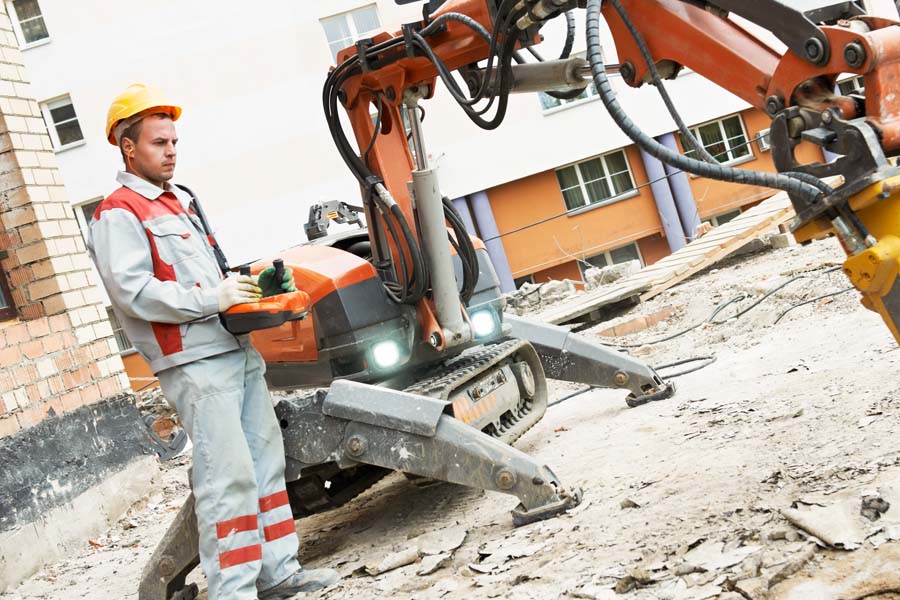Enter a Google search for brick-laying robots, and you will be inundated with videos about mechanical masons with nifty names like SAM or Hadrian X.
The same goes for drywall-hanging robots, including one dubbed “Canvas.”
There are also innumerable pilot programs and demonstration projects taking place deploying various construction robotic assistants at jobsites across the globe.
Is construction robotics finally ready to assume a significant role on jobsites—akin to what has happened in manufacturing, where automation has become a transformative force that has eliminated countless jobs?
Not so fast, according to experts on artificial intelligence (AI) in construction. First, there is the inherent complexity of construction work, which far exceeds the relatively simplicity of many manufacturing tasks.
Then there is the level of sophistication—or lack thereof—of construction AI today, with its reputation far exceeding its capabilities.
“A 2-year-old kid understands much more than a humanoid robot that is on the market today,” said Amir Behzadan, an associate professor at Texas A&M University in its construction science department.
Construction is a different animal
The past few years have seen a major push to bring the construction industry up to par in its technology use with that of other industries, like manufacturing.
A 2017 report by management consulting firm McKinsey made waves in the industry when it detailed how far the construction sector had fallen behind others when it came to construction technology adoption.
While labor productivity rose 3.6% globally in manufacturing during the previous two decades and 2.8% for the world economy at large, in construction that number was a paltry 1% a year, the report found.
Robotics and automation have driven that big increase in productivity in factories around the world.
In construction, however, some tasks have proven more resistant to automation than others.
Grading for highway projects and other construction, for instance, has been an automation hit, with the ability to plot out the path for the machine ahead of time, eliminating operator error.
Another success has been 3D laser systems, which can scan buildings and land to create computer renderings, forgoing the need for teams of surveyors and architects painstakingly taking down measurements.
ALSO ON BUILT:
Hernan Guerra, now a senior lecturer in the construction science department at Texas A&M University, worked for 16 years at major contractor Clark Construction.
Then a senior project manager, Guerra was working on the renovation of a convention center in Florida. The company brought in a firm to do 3D of the interior, including the superstructure and beams.
“Laser scanners—they are awesome; it didn’t take very long,” he said.
But many other jobs on a construction jobsite remain beyond the capabilities of machines and robots, and they will likely remain that way for many years, experts say.
Manufacturing is characterized by many different repetitive tasks that can be relatively easy to automate.
By contrast, construction work is often broken down along different trades that represent fairly broad categories, such as carpentry, masonry, plumbing, as well as iron and electrical work.
Within each category, there are myriad tasks, further complicated by the fact that no single project is exactly the same as the last one.
Guerra said he encountered the limitations of a brick-laying robot during his previous job with a large contractor.
“We did try robotics and automation on a few things—’tried’ is the word, not implemented,” he said.
Guerra said he was helping oversee work on an eight-story building that featured a brick-laying machine touted for being able to operate 24/7.
The reality, though, fell far short of that.
The machine couldn’t work on its own. It still needed people to operate it: one feeding it brick, the other mortar on the other side, Guerra said.
Then, when the machine was done in its current location, it had to be moved to a new spot and set up all over again, which was an involved process that took some time to do, Guerra said.
The machine wound up costing more to operate than skilled labor.
“We went back to the way we were doing things—I still think we are in the diapers in this, in robotics,” Guerra said, referencing AI in construction technology’s relative infancy.
Machines need to be educated
Human construction workers can intuitively problem-solve, figuring out within five or 10 minutes of arriving on a jobsite what needs to be done and where to start.
The central reason that brick-laying or drywall-hanging robots are nowhere near ready to take over on construction sites is the AI systems—the algorithms on which they run—don’t have anywhere near that level of sophistication.
To improve the performance of robots, a massive amount of data will need to be collected from construction sites over many years, said Pingbo Tang, an associate professor of civil and environmental engineering at Carnegie Mellon University.
Complicating matters, construction is a highly competitive and fragmented industry, so companies in general are not freely sharing data or, for that matter, even collecting it, Tang said.
‘A 2-year-old kid understands much more than a humanoid robot that is on the market today.’
Amir Behzadan, an associate professor at Texas A&M University in its construction science department.
Texas A&M’s Behzadan offered a similar take.
“We need years to collect data before it can do more than lay a row of bricks,” Behzadan said. “We don’t have the oceans of data needed to train such robotic workers.”
Rank-and-file construction workers, meanwhile, aren’t shaking in their boots in fear of being replaced by robots either, according to Mark Erlich, a fellow at the Harvard Labor and Worklife Program at Harvard Law School and retired executive secretary-treasurer of the New England Regional Council of Carpenters.
It’s not that construction workers in the trades aren’t afraid of change. Like everyone else, they are, Erlich said.
When power saws were being introduced, old-time carpenters were known to throw the new tools off the roof. The fear was that power tools would speed up work, meaning fewer days on the job.
But despite the videos of brick-laying machines, it’s one thing to have a robot “standing still,” laying bricks from a fixed position, Erlich said. “It’s another thing to have a robot that goes from room to room in a building and has to figure out where all the materials are.”
“It’s not that practical—maybe someday it will be,” Erlich said.
The biggest change right now is the shift to off-site construction, in which prefabricated materials and sections of buildings are being constructed in factory-like facilities. “I think all the talk about robots and drones and all the other toys—I don’t think that’s a very immediate issue on the jobsite,” Erlich said.












